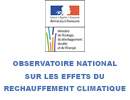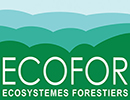Impacts of Climate Change on Biodiversity and the Carbon Cycle in Grassland Environments (IMAGINE)
Impacts of Climate Change on Biodiversity and the Carbon Cycle in Grassland Environments (IMAGINE)
Grasslands and mountain meadows currently occupy nearly one-third of national soil. By 2050, the surface covered by grasslands (like farmland) could decline by 30 to 50%, and the decrease would be particularly noticeable in the southern half of France (as shown by the EC-FP5 ATEAM project’s findings). The lands affected by this reduction in anthropogenic pressure will likely be colonised by ligneous plants. However, the colonisation dynamic could be significantly affected by climate (and atmospheric) change, through its three main components: warming, a change in pluviometry and an increase in atmospheric CO2.
Based on the state of the art, the following hypotheses can be made:
- in 2050, in the South of France (Massif Central and Languedoc), warming is expected to reach approximately 3°C, on an average annual basis, summer pluviometry would decrease by 30% and atmospheric CO2 concentration would reach 570 ppm (EC-ACACIA project simulations).
- the survival of juvenile pioneer ligneous plants is the critical stage for the colonisation process. In environments less disrupted by grazing, it depends first and foremost on root competition for water and nutrients, as well as aerial competition for light.
- ligneous species generally respond more to CO2 at the juvenile stage than do herbaceous plants, and colonisation by ligneous plants is thought to be fostered by an increase in atmospheric concentrations of CO2.
- in contrast, the drop in summer pluviometry and warming would hinder the survival of juvenile invasive plants, heightening competition for water with the well-established herbaceous layer.
In order to test these assumptions, we propose an experimental on-site review of the said interactions between juvenile ligneous plants and herbaceous vegetations, at two complementary sites (Clermont and Montpellier). At each of these two sites, three identical treatments will be compared: the control group, 3°C warming, with or without a 30% decrease in summer pluviometry. A fourth scenario (adding the increase in atmospheric CO2 to temperature factors and pluviometry) will be tested in the new systems set up in Clermont.
This will make it possible to study, for the first time, the combined effect of the three main components of climate change (temperature, precipitation and CO2).
- With regard to biodiversity: vegetation, micro-organisms and soil fauna. This study will be carried out in terms of both structure and community diversity, and in terms of functional traits.
- With regard to colonisation by ligneous plants: the impacts of climate change on the colonisation dynamics by pioneer ligneous plants. At each site, the behaviour of three ligneous species introduced at the juvenile stage will be compared.
- With regard to the carbon cycle: trends in air and underground organic carbon stocks, photosynthesis and soil respiration, decomposition of marked soil beds.
In the second section of the project, using the results from the experimental section, we will test the impacts of climate change (regionalised scenarios, using simulation (ORCHIDEE model, coupled with grassland or forest ecosystems) on ligneous plant colonisation at the level of France and on aerial and underground stocks.
| Coordinators |
Jean-François Soussana, INRA – Centre de Clermont-Theix |
| Partnership |
CNRS – CEFE |
| Funding |
MEDD
|
| Budget |
50 000€ (including tax)
|




